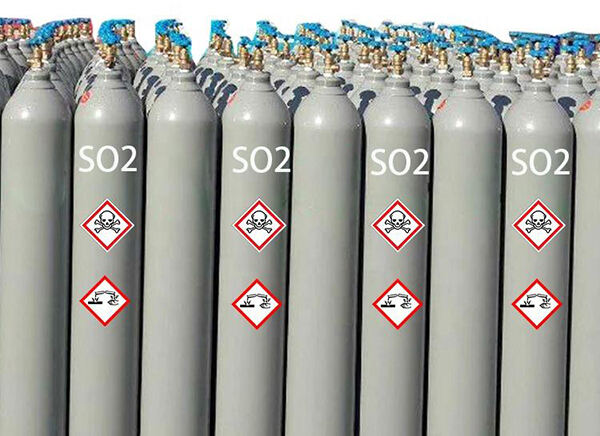Understanding Sulfur Dioxide (SO2): Its Characteristics, Uses, and Environmental Impact
Sulfur dioxide (SO2) is one of the most common and simple sulfur oxides, recognized by its chemical formula, SO2. This colorless, transparent gas possesses a pungent, irritating odor, making it quite distinctive in various industrial contexts. As a soluble gas, sulfur dioxide readily dissolves in water, ethanol, and ether, which complicates its management in atmospheric and industrial processes. Notably, sulfur dioxide also ranks as a major atmospheric pollutant, with significant implications for environmental health.
The natural occurrences of sulfur dioxide can be traced back to volcanic eruptions, where vast amounts of this gas are expelled into the atmosphere. However, a considerable portion of sulfur dioxide emissions is linked to human activities, particularly in industrial processes. The combustion of coal and oil, often rich in sulfur, directly results in the release of sulfur dioxide. When dissolved in water, sulfur dioxide reacts to form sulfite (H2SO3), a significant precursor to more harmful substances. Under the influence of PM2.5 particulate matter, sulfite can oxidize rapidly to produce sulfuric acid, a primary component of acid rain. This transformation highlights the environmental concerns tied to the utilization of sulfur-rich fossil fuels.

Primary Uses of Sulfur Dioxide
Sulfur dioxide is a versatile compound with a variety of applications across multiple industries:
1. Organic Solvent and Refrigerant: Sulfur dioxide serves as an effective organic solvent and refrigerant, playing an essential role in the refinement of various lubricating oils.
2. Chemical Manufacturing: One of the key uses of sulfur dioxide is in the production of sulfur trioxide (SO3), sulfuric acid (H2SO4), sulfite salts, and thiosulfates. Additionally, it functions as a fumigant, preservative, disinfectant, and reducing agent.
3. Food Industry: In China, sulfur dioxide is permitted as a reducing bleaching agent, particularly in food processing. It exhibits strong bleaching capabilities and effectively inhibits oxidative enzymes in plant-based foods. Regulatory measures stipulate its use in wine and fruit wine production, with a maximum allowable limit of 0.25 grams per kilogram and a stipulated residue limit not exceeding 0.05 grams per kilogram.
4. Agriculture and Manufacturing: Beyond the food industry, sulfur dioxide is employed in the production of pesticides, synthetic fibers, dyes, and various other industrial chemicals.
5. Pest Control: Its role as an insecticide and bactericide further cements sulfur dioxide's importance in agricultural and industrial sectors, serving as a crucial tool for pest management.
Conclusion
While sulfur dioxide (sulfur dioxide) remains integral to numerous industrial applications, its environmental impact cannot be overlooked. As a prominent atmospheric pollutant, understanding sulfur dioxide's properties, uses, and effects is essential for both regulatory bodies and industries that rely on this compound. Ongoing assessments and innovations are necessary to mitigate the adverse environmental consequences associated with sulfur dioxide and ensure a sustainable approach to its usage.

 EN
EN
 AR
AR
 CS
CS
 DA
DA
 NL
NL
 FI
FI
 FR
FR
 DE
DE
 EL
EL
 IT
IT
 JA
JA
 KO
KO
 NO
NO
 PL
PL
 PT
PT
 RO
RO
 RU
RU
 ES
ES
 TL
TL
 ID
ID
 SK
SK
 SL
SL
 UK
UK
 VI
VI
 TH
TH
 TR
TR
 AF
AF
 MS
MS
 SW
SW
 GA
GA
 CY
CY
 BE
BE
 KA
KA
 LO
LO
 LA
LA
 MI
MI
 MR
MR
 MN
MN
 NE
NE
 UZ
UZ

